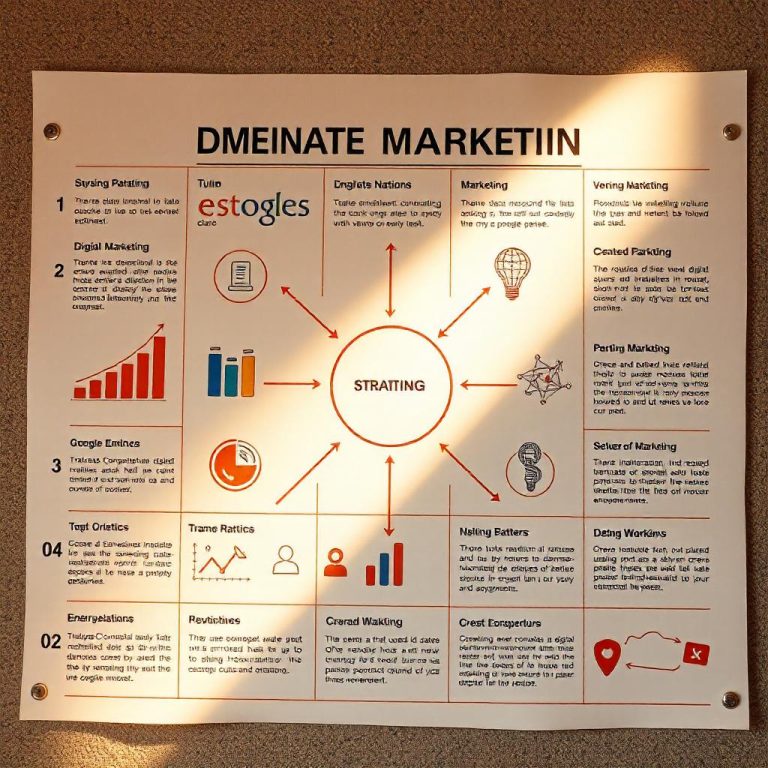How To Set Marketing KPIs
Setting Key Performance Indicators (KPIs) for marketing is essential for measuring the effectiveness of your efforts, optimizing strategies, and ensuring alignment with business goals. Well-defined KPIs offer insights into what is working, what needs improvement, and how to make data-driven decisions. Here’s a guide on how to set effective marketing KPIs:
1. Align KPIs with Business Objectives
Start by understanding your overarching business goals and how marketing can support them. Are you aiming to increase revenue, expand brand awareness, boost customer retention, or generate leads? KPIs should be directly tied to these goals so that each marketing activity clearly contributes to the broader business objectives. For instance:
Start Your Digital Business Today for Just 20 USD
- Revenue Growth: Track KPIs like sales generated from marketing, customer acquisition cost (CAC), or conversion rate.
- Brand Awareness: Measure metrics like social media reach, website traffic, or brand mentions.
- Lead Generation: Set KPIs for the number of qualified leads, lead conversion rates, or cost per lead.
2. Use the SMART Criteria
KPIs should be SMART: Specific, Measurable, Achievable, Relevant, and Time-bound.
- Specific: Define KPIs that are clear and unambiguous (e.g., “increase website traffic by 25%” instead of “increase website traffic”).
- Measurable: Ensure there’s a quantifiable metric so you can easily track progress.
- Achievable: Set realistic goals based on your resources, industry benchmarks, and past performance.
- Relevant: Make sure KPIs are closely related to marketing and business objectives.
- Time-bound: Define a timeframe for achieving each KPI (e.g., “Increase email sign-ups by 15% in Q4”).
3. Identify Key Marketing Channels and Tactics
Different marketing channels have unique KPIs, so determine which channels are most relevant to your goals. For example:
Digital Marketing for Beginners: Learn Affiliate Marketing and Facebook Ads
- Social Media: Track engagement rate, followers growth, or social shares.
- Email Marketing: Set KPIs for open rate, click-through rate (CTR), or unsubscribe rate.
- SEO and Content Marketing: Measure organic traffic, keyword ranking, or time spent on page.
- Paid Advertising: Track cost-per-click (CPC), cost-per-thousand impressions (CPM), or return on ad spend (ROAS).
Select KPIs for each channel that will help you understand how it contributes to the overall marketing goals.
4. Determine Baselines and Set Benchmarks
To set realistic targets, establish a baseline by reviewing your past performance data for each KPI. Analyzing previous metrics can help you set achievable growth rates and benchmarks. Additionally, look at industry standards and competitor data to set benchmarks that align with market expectations.
For instance, if your average website traffic has been increasing by 10% each quarter, setting a target of 12-15% might be ambitious but realistic. Conversely, if industry standards show a typical CTR of 3%, then setting a 4% CTR goal for email campaigns might be a good stretch target.
5. Prioritize and Focus on High-Impact KPIs
While it’s tempting to track many metrics, prioritize those with the most direct impact on your business goals. Select a few high-impact KPIs rather than a broad range of metrics that may dilute your focus. For example:
- Top Priority KPIs: These should be core metrics that have a direct effect on business success, like conversion rate, customer lifetime value (CLV), or revenue growth from marketing campaigns.
- Secondary KPIs: Metrics like social media engagement or website bounce rate can be tracked for insights but may not be the main indicators of marketing effectiveness.
6. Set Quantifiable Targets for Each KPI
Once you have prioritized your KPIs, define specific targets. Make sure each target is clear, numeric, and time-bound. For instance:
Unlock the Secrets to Starting a Successful Career in Digital Marketing!
- Increase website traffic by 30% over the next six months.
- Achieve a 20% open rate for email campaigns by the end of the quarter.
- Generate 500 new qualified leads in Q1.
Having a clear target allows you to monitor progress and make necessary adjustments.
7. Establish a Tracking and Reporting System
Consistent tracking and reporting help you evaluate whether you’re on track to meet your KPIs. Use tools like Google Analytics, CRM software, social media analytics, or marketing automation platforms to gather data. Create dashboards or reports to monitor these KPIs in real-time or at regular intervals (weekly, monthly, quarterly) so that trends can be identified early.
For example:
- Google Analytics: Ideal for tracking website-related KPIs like traffic, bounce rate, and conversions.
- Social Media Analytics: Provides insights into engagement rates, follower growth, and reach.
- CRM and Email Marketing Tools: Track email opens, clicks, and lead generation metrics.
8. Regularly Review and Adjust KPIs
KPIs should be reviewed regularly to assess progress and make necessary adjustments. Factors like seasonality, market changes, or new marketing channels may require you to modify your KPIs. Consider scheduling quarterly or monthly KPI reviews to stay agile and responsive to changes.
For example:
- If your new product launch underperformed in Q1, adjust lead generation KPIs for Q2 by focusing more on nurturing campaigns.
- If an ad campaign outperformed expectations, set higher conversion goals for future campaigns.
9. Communicate KPIs Across Teams
For KPIs to be effective, everyone involved in the marketing process must understand them. Make sure KPIs are shared with relevant teams, including content creators, social media managers, and sales teams, so everyone works towards the same objectives. Conduct regular updates and meetings to keep the team informed and aligned on progress.
10. Use KPIs to Guide Strategy Adjustments
KPIs are most valuable when they drive actionable changes. Use your KPI data to identify patterns and make adjustments to marketing tactics. For example:
Unlock the Secrets to Going Viral on Social Media and Making Money in Just 12 Days!
- High Engagement but Low Conversions: If a campaign is engaging but not converting, try testing different calls to action (CTAs) or optimizing landing pages.
- Good Traffic but High Bounce Rate: If web traffic is high but the bounce rate is also high, consider revising your content or targeting strategy.
Tracking KPIs in this way allows you to continually improve your marketing effectiveness and achieve better results.







